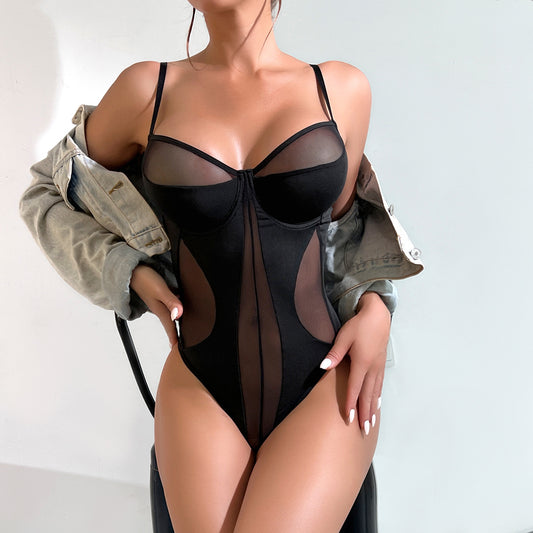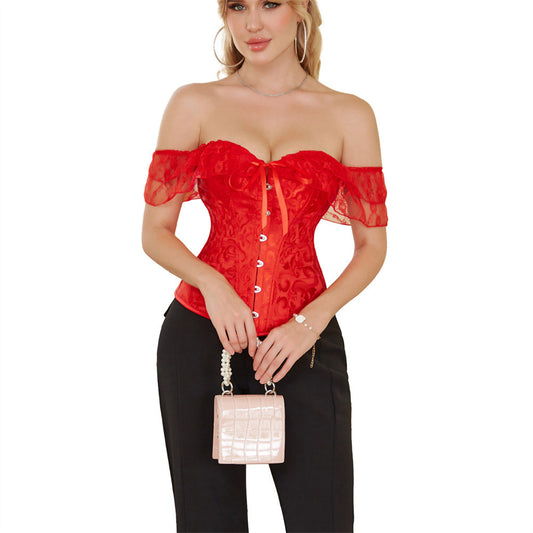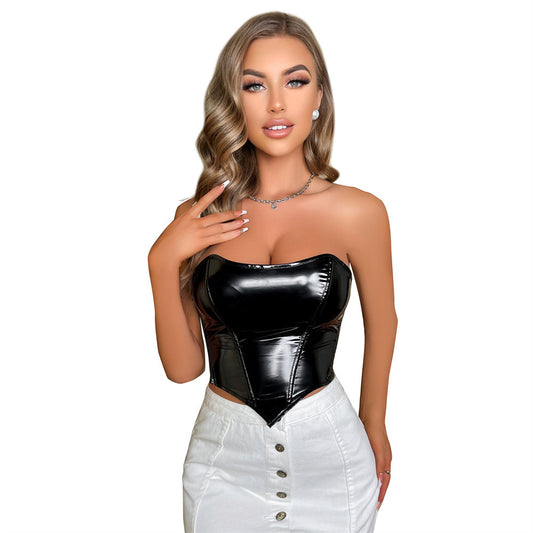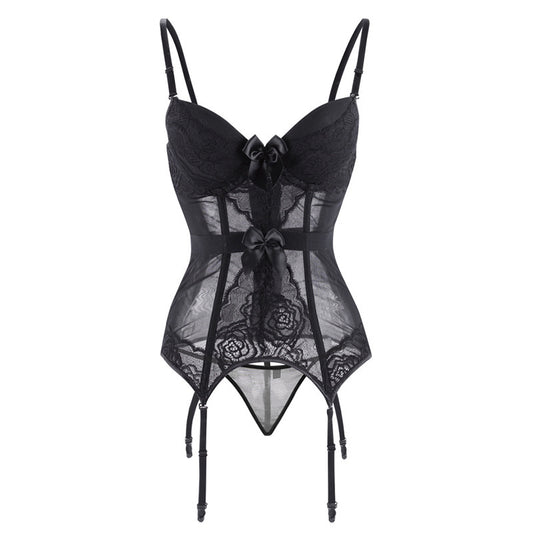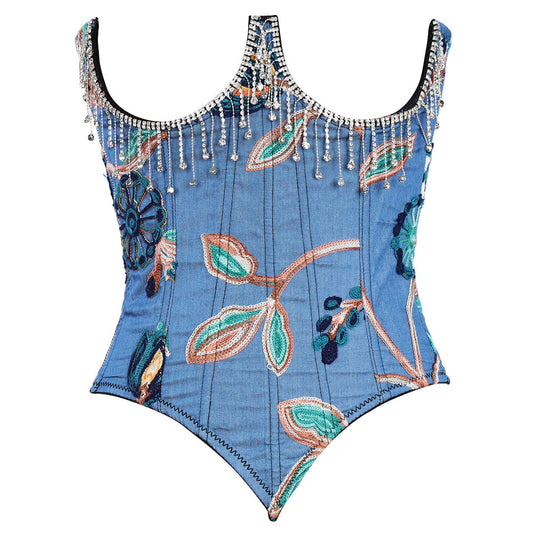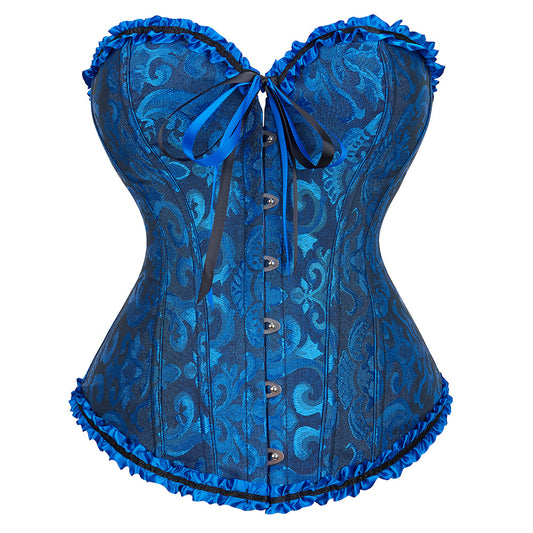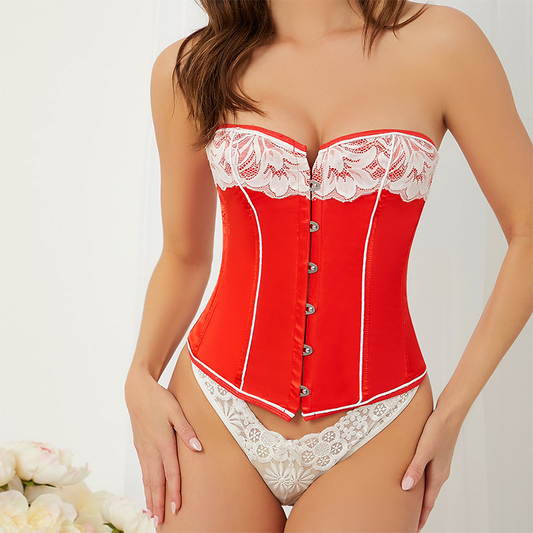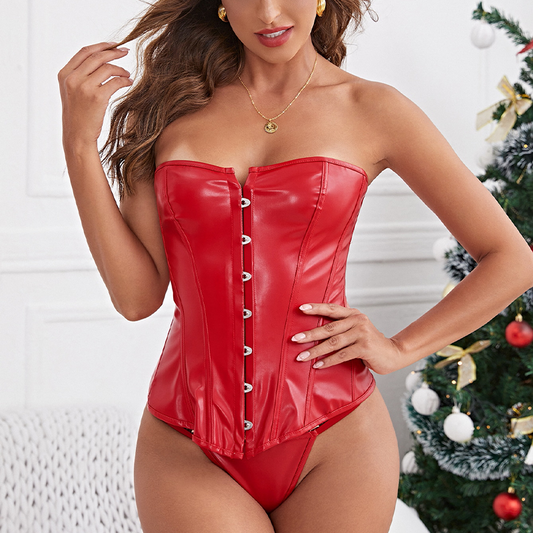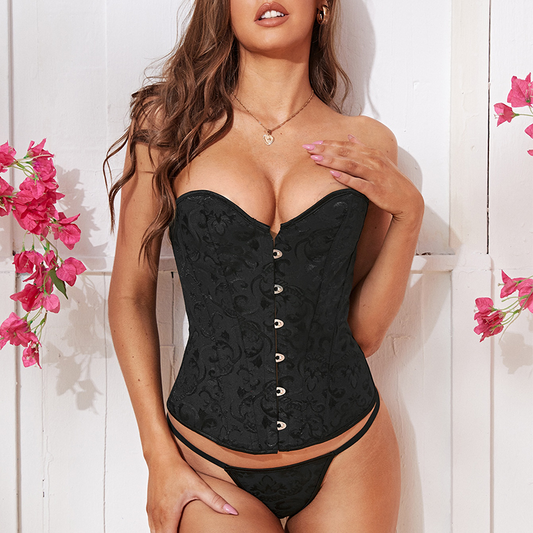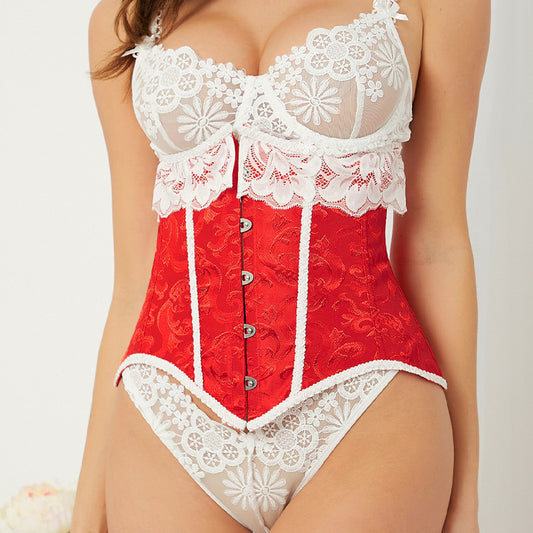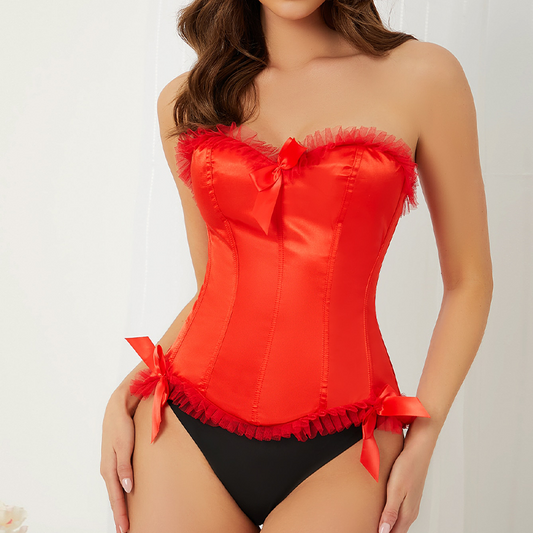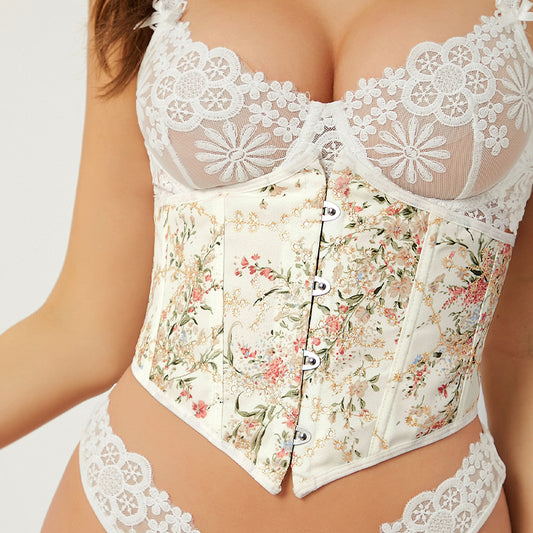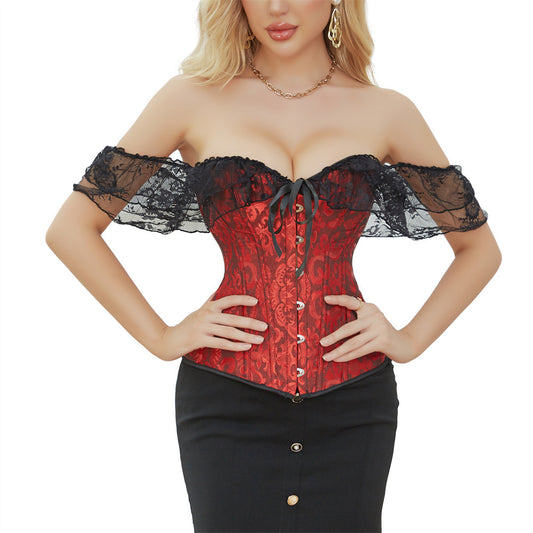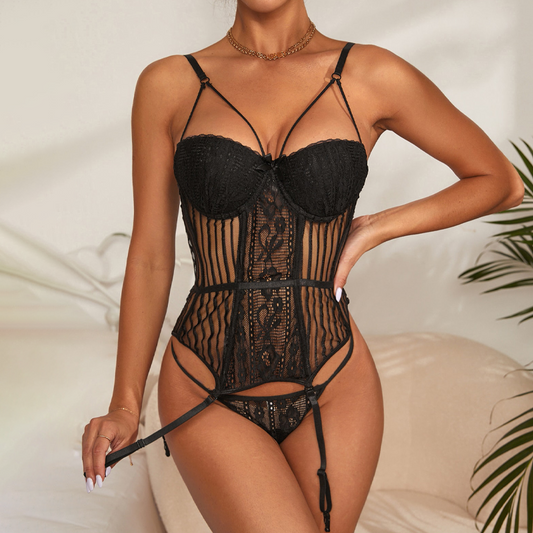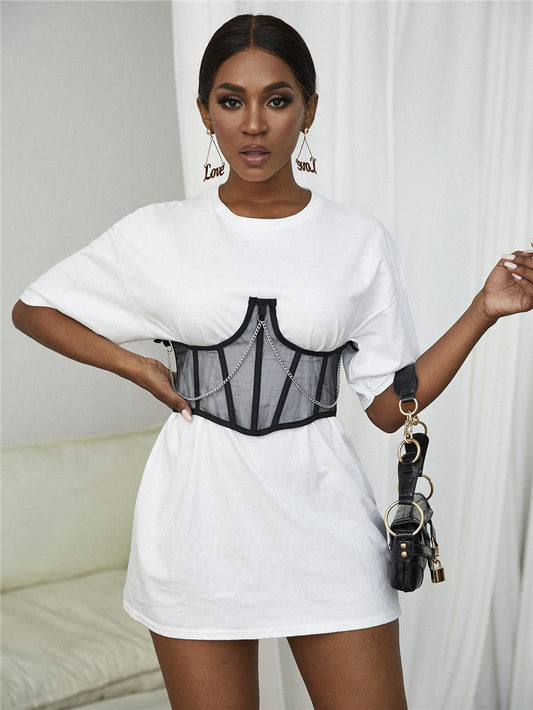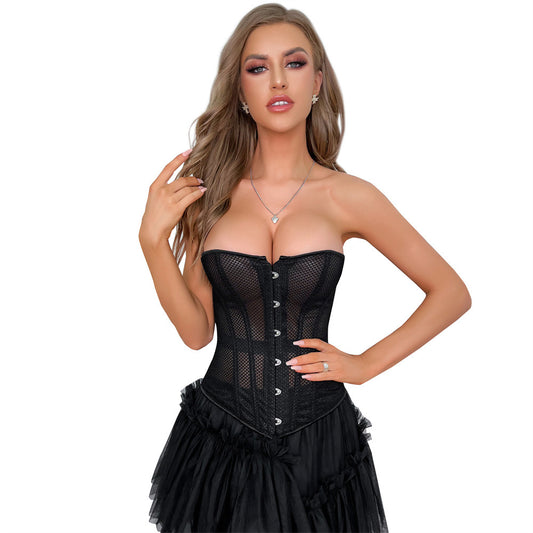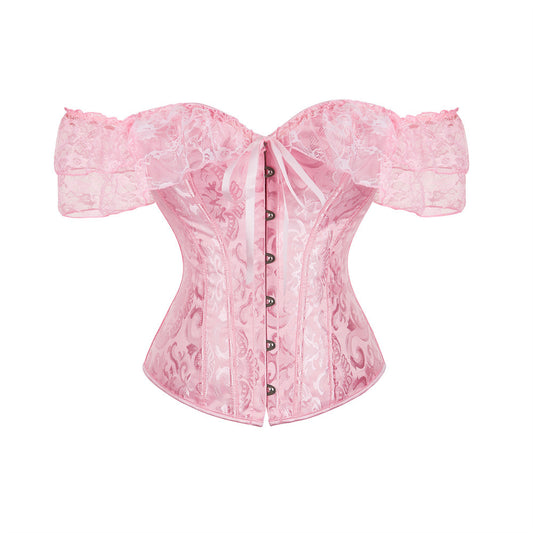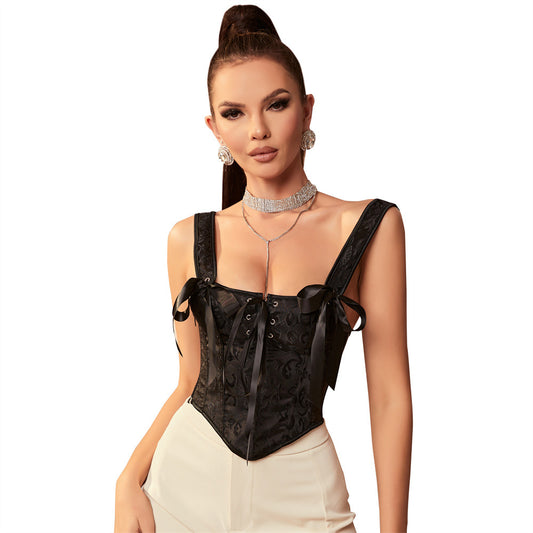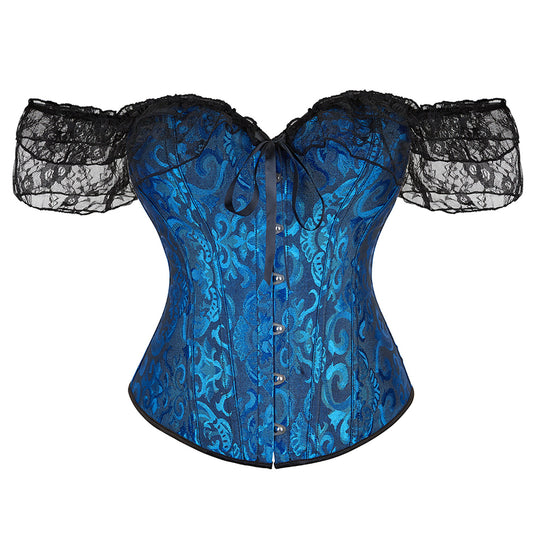-
Ultra Thin Mesh Slimming Sexy Lingerie
Regular price $30.00 USDRegular priceUnit price / per$30.00 USDSale price $30.00 USD -
Jacquard Lace Shoulder Strap Court Body Shaping Top
Regular price $46.00 USDRegular priceUnit price / per$46.00 USDSale price $46.00 USD -
Faux Leather Side Zipper Vest Tight Corset
Regular price $44.00 USDRegular priceUnit price / per$44.00 USDSale price $44.00 USDSold out -
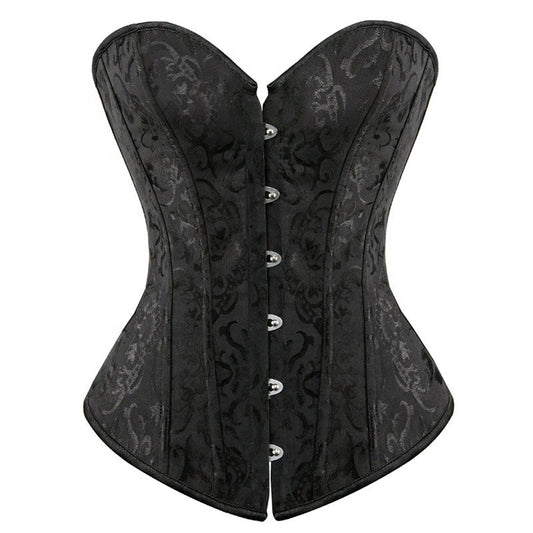
 Sold out
Sold outNon-Lace Jacquard Fabric Corset
Regular price $32.00 USDRegular priceUnit price / per$32.00 USDSale price $32.00 USDSold out -
Lace Coated Leather Sexy Shapewear
Regular price $40.00 USDRegular priceUnit price / per$40.00 USDSale price $40.00 USD -
Cinched Waist Tight Strap Corset
Regular price $70.00 USDRegular priceUnit price / per$70.00 USDSale price $70.00 USD -
Body Shaping Sexy Chest Support Underwear
Regular price $30.00 USDRegular priceUnit price / per$30.00 USDSale price $30.00 USD -
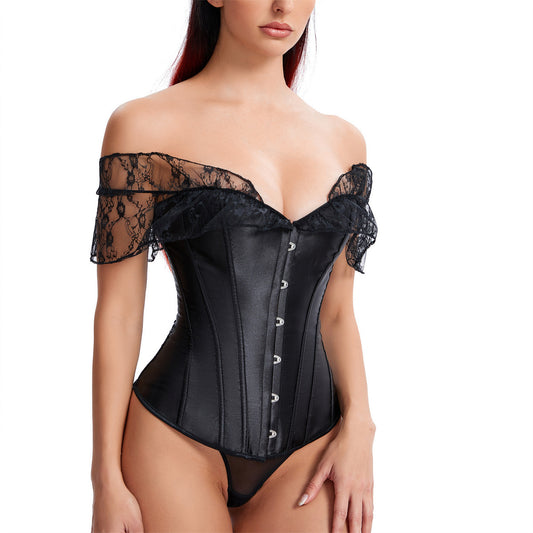
 Sold out
Sold outLace Short Sleeved Corset
Regular price $105.00 USDRegular priceUnit price / per$105.00 USDSale price $105.00 USDSold out -
Sexy Lace Corset
Regular price $42.00 USDRegular priceUnit price / per$42.00 USDSale price $42.00 USD -
Leather Sexy Corset
Regular price $45.00 USDRegular priceUnit price / per$45.00 USDSale price $45.00 USD -
Waist Girdling Belly Contraction Corset
Regular price $34.00 USDRegular priceUnit price / per$34.00 USDSale price $34.00 USD -
Sexy Waist Seal Chest Cover Corset
Regular price $45.00 USDRegular priceUnit price / per$45.00 USDSale price $45.00 USD -
Lace Bow Corset
Regular price $45.00 USDRegular priceUnit price / per$45.00 USDSale price $45.00 USD -
Popular Short Waist Seal Oil Painting Belt Corset
Regular price $33.00 USDRegular priceUnit price / per$33.00 USDSale price $33.00 USD -
Tube Top Women Court Chest Shaping Top
Regular price $46.00 USDRegular priceUnit price / per$46.00 USDSale price $46.00 USD -
Sexy Lace Corset with Mold Cup
Regular price $50.00 USDRegular priceUnit price / per$50.00 USDSale price $50.00 USD -
Waist Seal Black Cinched Waist Slim-Fit All-Match Boning Corset
Regular price $36.00 USDRegular priceUnit price / per$36.00 USDSale price $36.00 USDSold out -
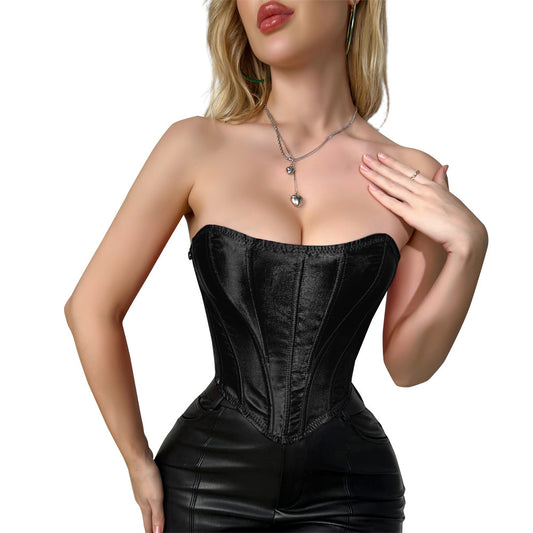
 Sold out
Sold outBlack Zipper Boning Corset
Regular price $44.00 USDRegular priceUnit price / per$44.00 USDSale price $44.00 USDSold out -
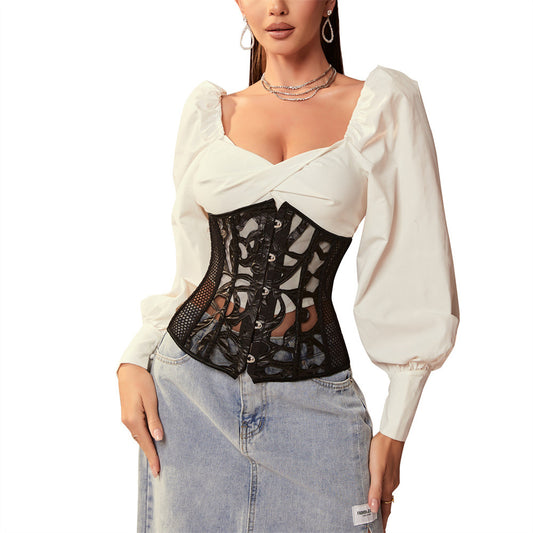
 Sold out
Sold outShort Hollow Out Cutout Shapewear
Regular price $38.00 USDRegular priceUnit price / per$38.00 USDSale price $38.00 USDSold out -
Mesh Summer Breathable Waist-Slimming Bodybuilding Corset
Regular price $44.00 USDRegular priceUnit price / per$44.00 USDSale price $44.00 USDSold out -
Off Shoulder Lace Mesh Corset
Regular price $46.00 USDRegular priceUnit price / per$46.00 USDSale price $46.00 USD -
Wearable Retro Drawstring Satin Corset
Regular price $47.00 USDRegular priceUnit price / per$47.00 USDSale price $47.00 USDSold out -
Jacquard Lace up Outer Girdle Breathable Shapewear
Regular price $46.00 USDRegular priceUnit price / per$46.00 USDSale price $46.00 USD -
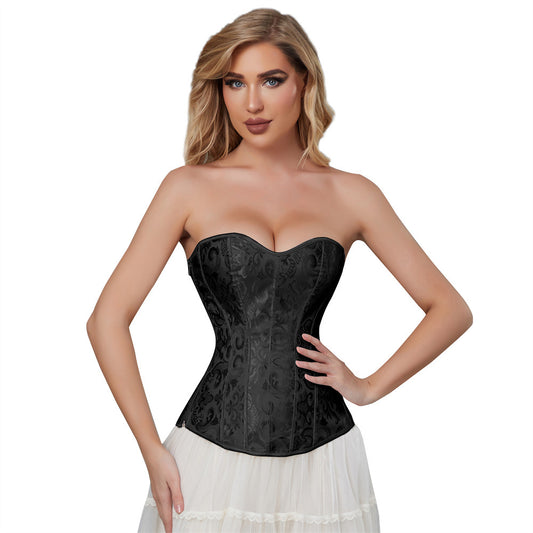
 Sold out
Sold outCourt Vest Jacquard Corset
Regular price $38.00 USDRegular priceUnit price / per$38.00 USDSale price $38.00 USDSold out
Collection: Corsets Shapewear
Corsets Shapewear: Enhancing Silhouettes with Precision and Style
Corset shapewear has transformed remarkably over the past century, evolving from tight undergarments to versatile fashion pieces that highlight and define the body's natural curves. This article explores the diverse world of corset shapewear, covering its history, varieties, advantages, materials, sizing, and current trends. It provides a thorough overview based on the most recent and relevant information available.
Understanding Corset Shapewear
Corset shapewear is designed to cinch the waist, support the back, and improve the overall silhouette. Unlike old-fashioned corsets, which were mainly used for fashion and posture support, today's shapewear uses advanced fabrics and ergonomic designs to offer comfort along with aesthetic benefits. Typically made from materials like spandex, nylon, and cotton blends, these garments provide different levels of compression and support.
Historical Evolution of Corsets
The corset has a long history that dates back to the 16th century. Originally, it was used to shape the torso into a desired form. By the Victorian era, corsets were a key part of women's fashion, highlighting an exaggerated hourglass figure. However, in the 20th century, corset use declined due to changing fashion trends and increased awareness of health concerns. Today, corset shapewear has made a comeback, combining traditional shaping methods with modern comfort and functionality.
Varieties of Corset Shapewear
Corset shapewear comes in several styles, each meeting different needs and preferences:
- Underbust Corsets: These start below the bust and extend to the hips, providing waist cinching without affecting the bust area. They are versatile and suitable for everyday wear or layering under clothes.
- Overbust Corsets: Extending from the bust to the hips, overbust corsets offer more comprehensive shaping and support. They can be worn as outerwear, adding a stylish touch to outfits.
- Waist Cinchers: A simpler type of shapewear, waist cinchers focus only on reducing the waistline. They are usually less restrictive and more comfortable for long-term wear.
- Corset Dresses: These combine the structure of a corset with the style of a dress, providing both shaping and visual appeal, making them perfect for formal events.
Advantages of Corset Shapewear
Corset shapewear offers several benefits, both practical and aesthetic:
- Waist Reduction: By applying targeted compression, corsets can significantly reduce the waistline, creating an hourglass figure.
- Posture Support: The sturdy structure of shapewear encourages proper posture, reducing back strain and promoting spinal alignment.
- Enhanced Confidence: Many wearers report increased self-esteem and body confidence when using shapewear, as it highlights their natural curves.
- Versatility: Modern designs allow corsets to be worn with various outfits, from casual to formal, making them a flexible addition to any wardrobe.
Materials and Construction
The effectiveness and comfort of corset shapewear depend largely on the fabrics and construction methods used:
- Fabrics: Common materials include high-quality spandex for elasticity, nylon for durability, and cotton blends for breathability. Some corsets also use steel boning for added structure.
- Seaming and Finishing: Precise seams ensure a smooth look under clothing. Flat seams and reinforced stitching add to both comfort and durability.
- Closures: Traditional lace-up back closures allow for adjustable tightness, while modern hook-and-eye closures offer ease of use and consistent compression.
Sizing and Fit
Proper sizing is essential for the effectiveness and comfort of corset shapewear. Most brands provide detailed sizing charts based on waist, hips, and bust measurements. Accurate measuring and considering the garment's fit are crucial:
- Snug Fit: Shapewear should be snug but not too tight. A good fit allows for breathing and movement without losing the shaping effect.
- Gradual Tightening: Start with a slightly looser fit and gradually increase tightness to help the body adjust to wearing shapewear.
- Professional Fittings: For the best results, professional fittings are recommended to ensure the garment matches individual body shapes and proportions.
Health Considerations
While corset shapewear offers several benefits, it is important to use it carefully to avoid potential health issues:
- Breathing and Circulation: Corsets that are too tight can restrict breathing and reduce blood flow. It's best to limit wear time and ensure the garment allows for comfortable movement.
- Muscle Support: Wearing shapewear for long periods without proper posture can lead to muscle dependency. Alternating between shapewear and natural movement helps strengthen core muscles over time.
- Skin Health: Breathable fabrics and good hygiene practices prevent skin irritation and promote overall skin health.
Modern Trends in Corset Shapewear
The current shapewear market blends tradition with innovation, catering to various fashion tastes and lifestyles:
- Fashion-Forward Designs: Modern corsets come in many colors, patterns, and styles, allowing wearers to express their personal style.
- Technological Advancements: Features like seamless construction and moisture-wicking fabrics improve comfort and functionality.
- Sustainable Practices: More manufacturers are using eco-friendly materials and ethical production methods, aligning with global sustainability trends.
- Inclusivity: The market now offers a wider range of sizes and styles to fit different body types, promoting inclusivity and body positivity.
Corset Shapewear in Everyday Life
Shapewear integrates smoothly into daily routines, providing both practical and aesthetic benefits:
- Professional Settings: Subtle shapewear offers a polished look under business attire, boosting confidence in professional environments.
- Casual Wear: Lightweight and flexible designs make shapewear comfortable for everyday outfits, subtly enhancing the natural figure.
- Special Occasions: Statement corsets can be worn as outerwear or foundation garments for formal events, adding elegance and sophistication to looks.
Maintenance and Care
Proper care extends the life and maintains the functionality of corset shapewear:
- Washing Instructions: Hand washing is recommended to preserve fabric quality and structural elements. Some garments may be machine washable on gentle cycles.
- Drying Practices: Air drying is best to prevent damage from high heat. Avoid wringing or twisting the fabric.
- Storage Tips: Store corsets flat or on padded hangers to keep their shape and prevent creasing.
Market Insights and Statistics
The global shapewear market was valued at around $3.5 billion in 2023 and has grown significantly due to rising consumer awareness of body positivity and fashion trends. Corset shapewear makes up a large part of this market, with an estimated annual growth rate of 5.2%. Key factors driving this growth include advancements in fabric technology, increased demand for versatile fashion solutions, and the role of social media in promoting body-enhancing garments.
Selecting the Right Corset Shapewear
Choosing the right shapewear involves several factors:
- Purpose: Decide if the shapewear is for everyday use, specific outfits, or special occasions.
- Comfort Level: Consider the desired level of compression and support, balancing looks with comfort.
- Style Preferences: Choose designs that match personal fashion tastes, whether for subtle enhancement or bold statements.
- Budget: Corset shapewear is available in various price ranges, allowing consumers to find options that fit their budget without sacrificing quality.
The Role of Corset Shapewear in Body Image
Shapewear plays a significant role in today's conversations about body image and self-esteem:
- Empowerment: Many people feel empowered by being able to control and enhance their silhouettes, which boosts their self-image.
- Body Positivity: Modern shapewear celebrates body diversity, encouraging acceptance and appreciation of different body types.
- Criticism and Balance: While shapewear can increase confidence, it is important to use it alongside healthy body image practices, avoiding reliance on garments for self-worth.
Future Directions in Corset Shapewear
The future of shapewear looks bright with ongoing innovation and growth:
- Smart Fabrics: Future shapewear may include smart textiles that monitor body metrics or adjust compression levels automatically.
- Customization: Advances like 3D body scanning will allow for personalized shapewear tailored to individual measurements.
- Sustainable Materials: Continued research into eco-friendly fabrics and production methods supports global sustainability goals.
- Hybrid Designs: Combining shapewear with other features, such as thermal regulation or athletic support, will expand the uses of corset garments.
Final Reflections
Corset shapewear has come a long way from its historical roots to become a modern essential in fashion and body enhancement. With a variety of styles, advanced materials, and a focus on comfort and functionality, today's corsets meet a wide range of preferences and needs. By understanding the different aspects of corset shapewear—from types and benefits to care and future trends—consumers can make informed choices that enhance their figures while supporting overall well-being. As the industry continues to innovate, corset shapewear remains a symbol of the ongoing desire for garments that combine style with practical support.

